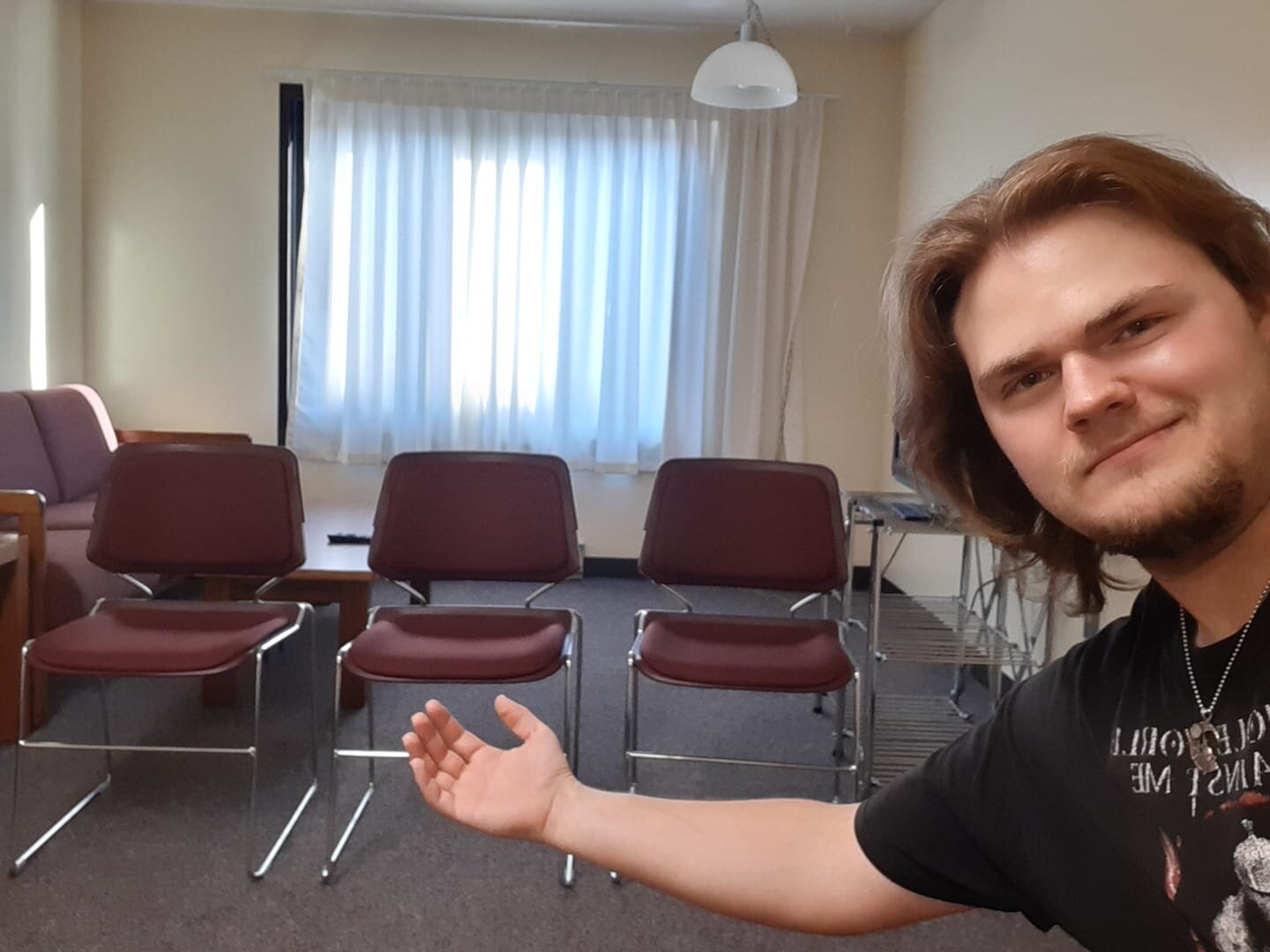An inside look on one UMD student’s quarantine
The Oakland Aspen Apartment building on UMD campus has three floors and is made up of two different buildings. Photo by Izabel Johnson
The notion of quarantining oneself is no longer a foreign idea to most people in 2020; distancing yourself from others has become a part of everyday life. But, for some located on the University of Minnesota Duluth campus, this idea has been taken to new levels this semester.
According to the Coronavirus (COVID-19) dashboard on the UMD Safe Campus website there are 309 total isolation and quarantine units set aside to house students who have been infected by or exposed to COVID-19. As of Oct. 8, 19 of the rooms were in use by students.
Dashel Anderson, a senior physics major at UMD, was one of those students.
After scheduling a COVID-19 test with UMD Health Services on Sept. 16, Anderson filled out an isolation/quarantine form. Later that day, he received a call from the UMD Housing and Residence Life Office asking him to pack his belongings within the half-hour and begin moving into the Oakland Aspen (Oakland A) Apartments on campus for quarantine. He would remain in quarantine for nine days before receiving a negative COVID-19 test result.
Dashel Anderson poses in front of an empty room in quarantine housing. Photo courtesy of Dashel Anderson
Anderson recalled the inconvenience of pushing the laundry cart filled with his things by himself from Heaney Hall to the Oakland A building, then back again once he was released from quarantine.
“Overall, I felt my experience living in Oakland A was fine,” Anderson said. “It started off great because it felt like taking a vacation from the world, but I was glad to get out because it didn’t feel very life-like. Humans are social animals, so social interactions are part of life, and it’s a part that obviously disappears in [quarantine].”
Reading, video games, research and listening to music were Anderson’s weapons of choice in the battle against boredom.
“It’s easy to become bored with a single time spender and boredom is the biggest problem in [quarantine] if you end up not being sick,” Anderson said.
Although there are no faculty or health care officials physically in the building, there are measures in place to make students comfortable. Help from a health care official is available by phone 24 hours a day.
Anderson also explained that UMD Dining Services has created an online form, which is filled out each night by students housed in the quarantine and isolation buildings.
Before 10 p.m., students choose their lunch and dinner for the next day from a variety of options that are offered in the dining center. Meals are then delivered once daily to the students.
Breakfast is continental. Lunch entrees vary from day to day, but include vegetarian options, main entrees or the Mongolian Grill entree choice. Dinner options vary, but include dishes like tacos, pizza, meatloaf or chicken pot pie.
Students placed in isolation or quarantine rooms are not allowed to leave the building or have guests. Photo by Izabel Johnson
According to numbers provided by UMD Health Services and UMD Marketing and Public Relations Director Lynne Williams, there have been 190 total tests administered by UMD Health Services through Oct. 8, with 39 positive student cases on campus.
Irie Unity, a first-year acting student at UMD, who lives in Oakland Balsam, Basswood and Birch (Oakland B) Apartments located across from the quarantine and isolation building, posted on the UMD class of 2024 Admitted Students’ Facebook page about the uptick in isolation rooms being used.
“Hey guys, even though we are out of ‘phase one’ that doesn’t mean we are cleared to go to big parties. I live across from the quarantine building and each night I see more and more lights on. Please just be smart about your interactions and please be considerate of the larger community, it would just suck to be sent home early,” the post read.
In an interview, Unity said she was compelled to post this after seeing fellow students post pictures and videos ignoring guidelines for interacting during the pandemic.
“It’s frustrating to see such a lack of care about something that is so serious,” Unity said. “We as students have a responsibility to make choices that will not harm others and I’m seeing that be disregarded.”
The university has now moved into Step Two of the Maroon and Gold Sunrise Plan, which allows students living on-campus increased access to other on-campus locations — an increased access that Unity fears will cause more lights to turn on in the quarantine building.
As outlined in the Maroon and Gold Sunrise Plan, UMD will continue to evaluate all students’ needs for isolation and quarantine. On-campus students have access to the dedicated quarantine buildings and off-campus students will receive support from local public health officials, depending on the county in which they reside.
Any questions or concerns regarding COVID-19 from UMD students can be directed to UMD Health Services at 218–726–8155 or UMD Housing at 218-726-8178.



